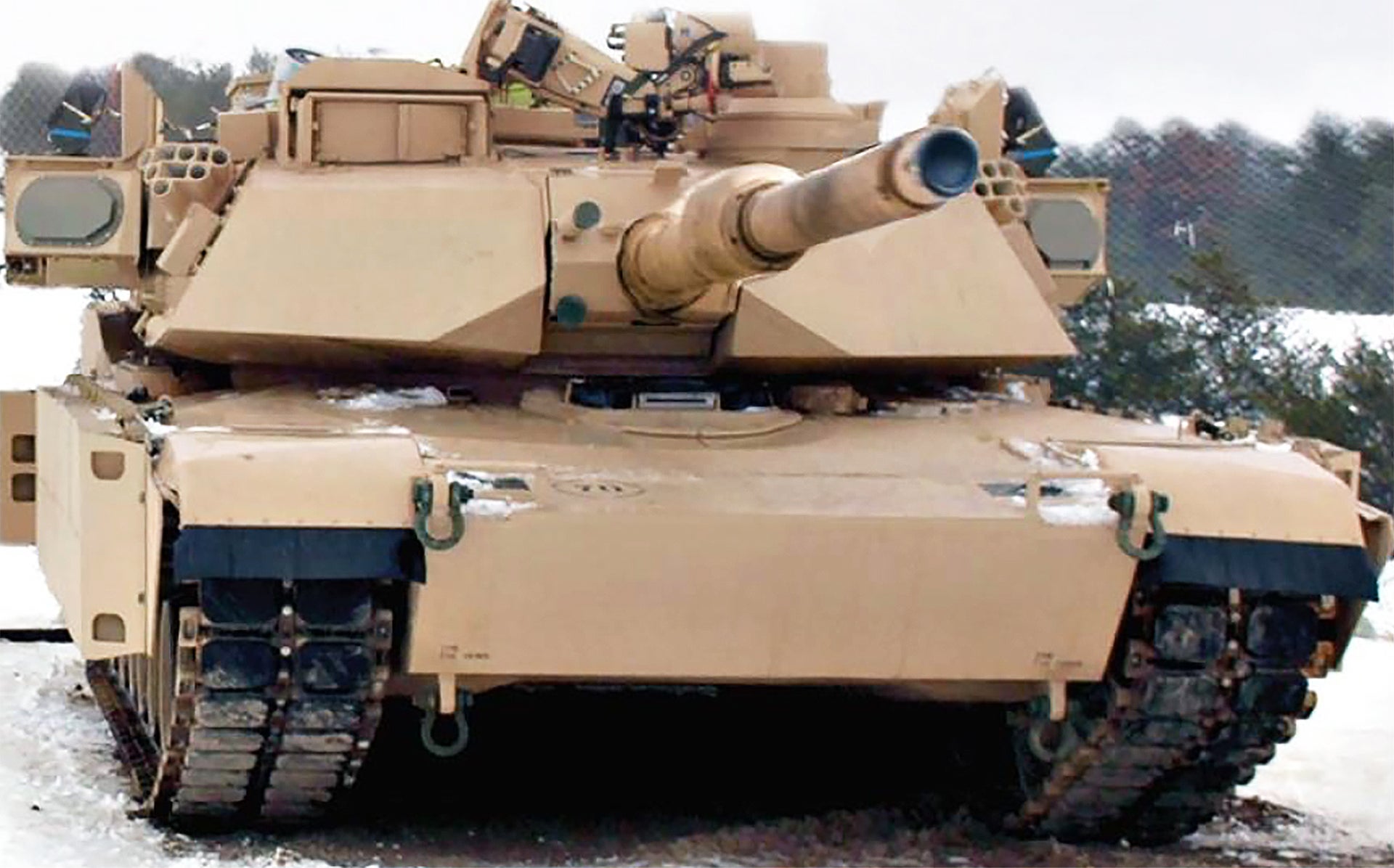We have discussed in-depth the U.S. Army’s move to equip some of its M1A2 Abrams main battle tanks with a version of Israeli’s proven Trophy Active Protection System, and although we have seen some renderings of what the Abrams may look like with the system, we now have actual pictures, and they look a bit different than expected to say the least.
As we noted on our last piece about Trophy, the system works as such:
“Trophy… is a so-called “hard kill” active protection system for tanks and other armored vehicles. It combines a radar with launchers that shoot a burst of metal pellets, akin to a large shotgun, to destroy incoming anti-tank rockets and missiles.”
Judging by these new photos, Trophy’s components are arranged in a more centralized manner than expected and the added “wing” structures attached to the Abram’s turret appears to make the tank even wider than it already is. From the front aspect it almost looks as if the brutish M1 has “ears” of sorts that protrude from its sides.
One of our readers alerted us to the images, which are found in marketing materials put out by one of Trophy’s prime contractors, Leonardo.

The added structure likely makes the system more modular and easy to install/uninstall and port over to other tanks if need be. It incorporates both the front and rear facing radars, the countermeasures unit and its magazine, as well as other components of the Trophy system.
These images also show the M1A2 equipped with both Trophy and the new Abrams Reactive Armor Tile (ARAT) kit mounted on the tank’s flanks and skirt. It’s unclear if operating with both the new active and passive protection measures installed will be the configuration for M1s operating in the highest threat environments or not.

The brochure says the Trophy system weighs roughly 1,800lbs, but it isn’t clear if that includes the steel fairings it is installed in on the M1 or not. Regardless, it just throws another ton onto the now 69 ton plus vehicle.
The system offers 360 degree protection against anti-tank missiles, RPGs, recoilless rifles and high explosive anti-tank rounds. It also offers the crew an instant indication of where the enemy fire came from so the threat can be neutralized. Specific zones cane be programmed as well. For instance, if dismounted infantry are marching alongside the left side of the vehicle, Trophy can be deactivated or put in passive detection mode on that side alone. And if an attack occurs the system can automatically broadcast the incident over data-link. If the system fails and the tank is hit, this can be very useful for getting rescue crews to it as fast as possible.
You can see the entire installation, including how the rear hemisphere facing radar arrays are mounted below.

The large size of the Trophy installations on the Abrams may be why it was flagged for additional testing due to integration issues with the Abrams turret, which our own Joseph Trevithick noted just weeks ago:
“Earlier in Sept. 2017, the Army Requirements Oversight Council, which works to develop overarching operational requirements and concepts, had decided that more testing was needed on Trophy. This was due to an unspecified loss of performance with regards to the turret and other impacts on the Abrams’ basic functioning.”

Regardless of potential developmental snags, after years of delays the U.S. Army is finally charging hard to upgrade the survivability of its most potent armored combat vehicles in a move, among others, to maintain an edge against late advances in Russian tank and armored vehicle technology. It is also meant to plug key vulnerability gaps identified via evaluations of various conflicts, including the one in Ukraine, as well as emerging enemy tactics.
Other active protection systems, like Iron Curtain, are also under testing and once these systems are fielded operationally they will likely end up in Eastern Europe, where the U.S. and its allies are working together to deter potential Russian aggression under Operation Atlantic Resolve.
Contact the author: Tyler@thedrive.com
